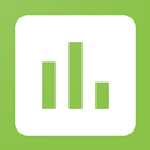Beskrivelse
# INTRODUCTION A digital twin is a virtual representation of an object or system that spans its lifecycle, is updated from real-time data, and uses simulation, machine learning and reasoning to help decision-making. Web Version is available
# KEY FEATURES * Realtime Dashboard - Data visualisation: Real-time dashboard presented data in a visual format, such as graphs, charts, gauges, or maps, making it easier to understand and interpret complex information quickly. - Immediate insights: By displaying data in real-time, dashboard provided immediate insights into current performance or trends, enabling users to identify issues or opportunities promptly. - Customisable views: Users can often customise their dashboard views to focus on specific metrics or data sets that are most relevant to their needs, allowing for personalised monitoring and analysis. - Alert notifications: Real-time dashboard can be configured to send notifications or alerts when predefined thresholds or conditions are met, ensuring that users are promptly informed of critical events or anomalies. - Performance tracking: Real-time dashboard helped track and measure performance against set goals, enabling proactive decision-making and course corrections if performance deviates from the desired targets. - Data integration: Dashboard can pull data from various sources and systems, consolidating information into a single interface for holistic analysis and monitoring. - Mobile accessibility: Dashboard was designed to be mobile-friendly, allowing users to access and view data on their smartphones or tablets, providing flexibility and convenience.
* Multiple Datasources - REST API: Refers to a system or service that exposes its data through a RESTful API (Representational State Transfer). REST is an architectural style for designing networked applications, and RESTful APIs are widely used for data exchange over the web. - WebSocket Client: Once the WebSocket connection was established, the server can send data updates to the client whenever there was new information available. This can be done continuously or triggered by specific events. - JSON Text: The static content in JSON format as the datasource.
* Drag Drop Widgets - Drag Drop: Refers to user interface elements that can be easily moved or rearranged by dragging and dropping them using a mouse or touch-based input. These widgets are commonly used in graphical user interfaces (GUIs) to provide an intuitive and interactive way for users to customise the layout and organisation of their screens or applications.
* Widget Properties - Edit: Determine the specific widget you want to edit. This could be a chart, text box, image, or any other widgets. - Auto Save: Designed to prevent data loss and provide a seamless user experience by periodically saving the current state of widget.
* Workspace Management - Collections: Multiple collection can be created in one workspace. - Tabs: Multiple tabs can be created in one workspace and one collection. - Widgets: Multiple widgets can be created in one workspace, one collection and one tab.
* Live Preview - Preview: For better user experience for developing the dashboard.
* Import Export Portfolio - Import: Portfolio can be imported from the correct version of export portfolio. - Export: Select a workspace and export the portfolio in JSON format file.
* Take Screenshot - Image: A PNG image was generated from the user.
* Template List - Template: More and more templates will be available for better user experience.
* Multi Languages - World Wide: Supported major common world wide languages.


